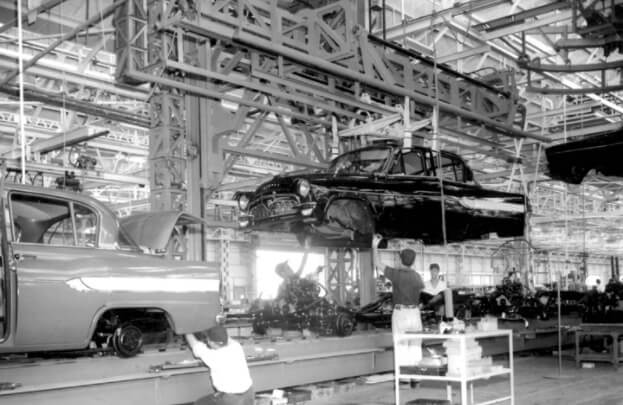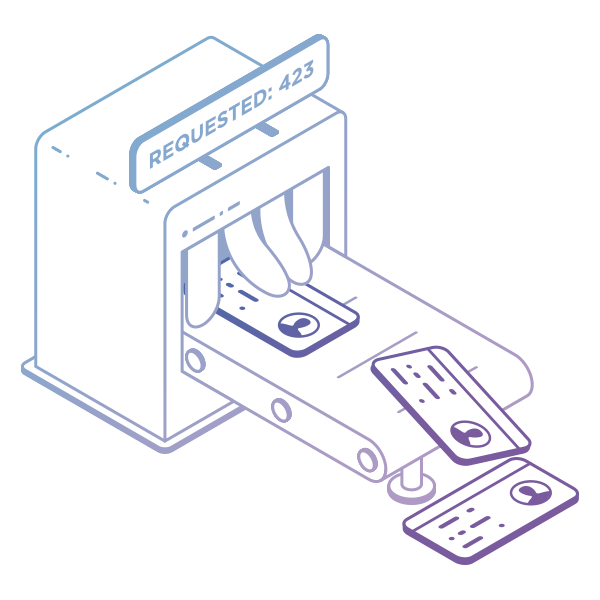Key Takeaways
-
What is Just-in-Time? A Lean production strategy that reduces waste by producing only what is needed, when it's needed, and in the required amount.
-
How does JIT work? It uses a pull system where production is triggered by actual demand, not forecasts.
-
Why use JIT? It minimizes inventory costs, boosts workflow efficiency, and supports continuous improvement.
-
Tools that support JIT: Kanban boards, demand tracking systems, and Lean workflow tools.
What Is the Just-in-Time System in Lean?
Just-in-Time is a core Lean manufacturing principle focused on producing exactly what's needed - no more, no less. The idea is simple: avoid overproduction and keep inventory lean by aligning production closely with real customer demand.
Originally developed by Toyota, the JIT philosophy helped the company rise to global prominence by lowering inventory costs, increasing quality, and improving operational flexibility.
The Pull System Behind JIT: How It Works
At the heart of JIT is a pull system - a method where new work is only "pulled" into production when there is customer demand. Unlike push systems, which rely on forecasts and schedules (and often lead to overstocking), pull systems help minimize inventory, reduce storage needs, and keep workflows flexible.
 Image source: www.toyota-global.com
Image source: www.toyota-global.com
Real-World Examples of Just-in-Time in Action
-
Toyota: The birthplace of JIT. Toyota produces vehicles based on actual orders, helping reduce costs and improve delivery precision.
-
Dell: Pioneered the "build-to-order" model in the PC industry, sourcing parts only after a customer placed an order.
-
McDonald's: Rather than pre-making burgers, food is prepared fresh when ordered to reduce waste and ensure quality.
What Are the Main Benefits of JIT?
Adopting Just-in-Time principles delivers major advantages:
-
Reduced Inventory Costs: Less need for storage means lower holding costs.
-
Improved Workflow Visibility: Visual tools like Kanban make task status and bottlenecks visible.
-
Higher Efficiency: Focus only on work that's needed now.
-
Elimination of Waste: Helps address all 7 types of Lean waste - from overproduction to motion.
-
Continuous Improvement (Kaizen): Empowers employees to find and implement small, ongoing improvements.
4 Key Steps to Implement JIT
-
Assess Demand Accurately: Gather real-time customer data to guide production.
-
Establish a Pull System: Use physical or digital Kanban boards or similar tools to trigger work based on need.
-
Streamline Inventory: Minimize raw material and product stock to free up resources.
-
Standardize and Train: Ensure processes are documented and everyone knows their role in the system.
How to Measure ROI from a JIT System?
You can evaluate the success of your JIT system through:
-
Inventory Turnover Ratio: Higher ratios mean less waste and more responsiveness.
-
Lead Time Reduction: Measure how quickly orders go from request to delivery.
-
Carrying Cost Savings: Calculate money saved from not holding excess stock.
-
Customer Satisfaction Scores: Faster and more accurate deliveries = happier customers.
What Tools or Software Support Just-in-Time Systems?
To implement JIT effectively, many companies use:
-
Kanban Boards: Visualize and limit work in progress for smoother flow.
-
AI-driven Workflow Platforms: Automate tasks, surface bottlenecks, and improve resource allocation.
-
Inventory Management Tools: Track stock levels and trigger reorders based on demand.
Why JIT Still Matters Today
Just-in-Time isn't just a manufacturing tactic - it's a mindset. It teaches us to value flow over forecasts, demand over guesswork, and agility over stockpiles.
As Lean thought leaders commonly interpret:
"The key to the Toyota Way and what makes Toyota stand out is not any of the individual elements… But what is important is having all the elements together as a system. It must be practiced every day in a very consistent manner - not in spurts."
Businessmap is the most flexible software
to align work with company goals





 Image source:
Image source: 


